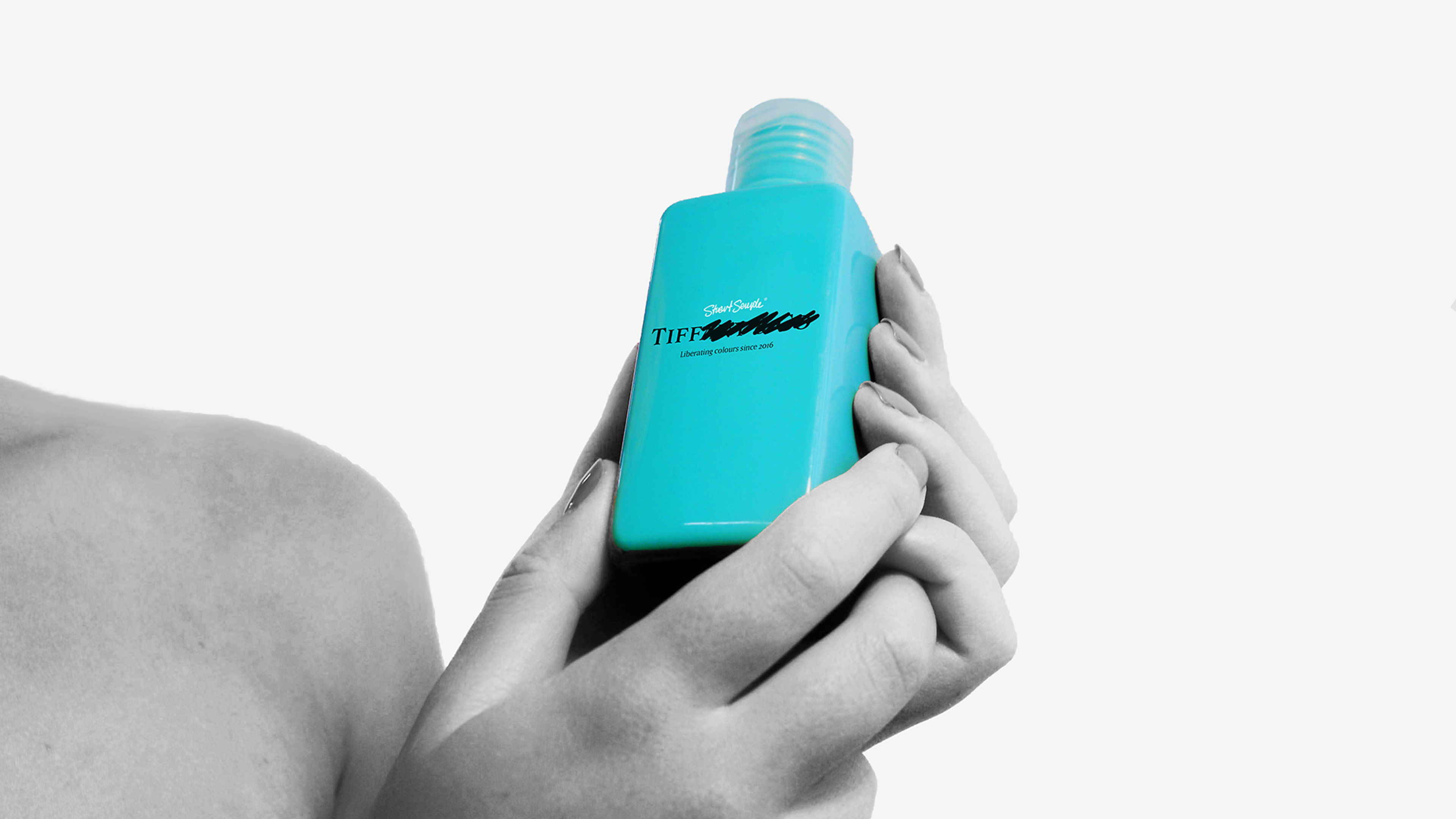Tiffany Blue. Close your eyes, and you can see it in your mind—adorning all those precious jewelry boxes of the multi-billion dollar jewelry empire. The company has used this particular shade of blue since it was created by Tiffany & Co.’s cofounders in 1837, roughly two decades before the luxury-goods company began focusing on jewelry. Then in 1998, Tiffany trademarked the color for its own brand.
But now, you can buy Tiffany Blue. Because artist Stuart Semple—a provocateur in paint—has “liberated” the color, and dubbed it, Tiff Blue. The color went on sale earlier this month in $28 150ml vials, before quickly selling out—though you can put your name on a list for when it’s restocked.
“The iconic Tiffany Blue has been held tight in the Tiffany & Co. grasp, but the Studio has been able to recreate a stunning super-flat matte high-grade shade for all artists to use in their creations,” the product description reads.
This is just the sort of punching-up-art stunt on which Semple thrives. (He famously created the world’s “pinkest pink” paint after artist Anish Kapoor secured exclusive rights to the use of Vantablack, the world’s blackest black. Kapoor flipped him the bird on Instagram for the joke. And then Semple did his best to clone the blackest black, too.)

But is it actually illegal, or all that risky, for Semple to sell the paint? Probably not, according to Sarah Burstein, professor of law at the University of Oklahoma—who regularly teaches about Tiffany Blue in her own legal courses, alongside T-Mobile’s magenta, and UPS’s brown (both of which are also trademarked).
“When you have a trademark for a color, you don’t own the color outright. It’s not a property. It’s not like, ‘I bought this land, it’s mine!'” says Burstein. “What you can say is, ‘when used in connection to certain groups or services, people connect this blue with me. So I should be able to protect the reputation for my goods and services.'”
Tiffany has exclusive rights to using its blue in connection to what people know it for: jewelry, and perhaps even more specifically, jewelry boxes. Even if you were to literally paint a ring in Tiffany Blue, it wouldn’t necessarily be enforced in the courts as a trademark breach. “Ultimately, the question is, are you going to confuse consumers?” says Burstein. “If you went and painted a ring blue . . . no one is going to think that’s Tiffany. It’s not the products known for being blue, it’s the box. I suppose if you took the box and painted it blue for your own ring business, maybe . . . [but] if you paint a box with this, it’s going to look like you painted a box! It’s interesting as a hypothetical . . . but it’s hard to believe it could be a thing.”
That said, Burstein admits that Tiffany & Co. could still sue Semple defensively for this product. Even if they lost the case, it might deter others from riffing on Tiffany Blue, lest they also face litigation. “If you don’t police your mark, it could become generic,” says Burstein. And if Tiffany could no longer prove some inherent brand association between their own products and this blue, it loses much of its trademark protection. (We have reached out to Tiffany & Co. for comment, and will update the story if we hear back.)
In any case, Semple is not giving up the fight for Tiffany Blue—whether or not anyone else is fighting back. “I see the art materials as more of a cultural critique, a piece of critical art [rather] than a business,” he writes. “My studio runs on a not-for-profit basis, so we put anything we might get back into fighting for freedom of expression, and opening up colors for everyone.”
Recognize your brand’s excellence by applying to this year’s Brands That Matter Awards before the early-rate deadline, May 3.
